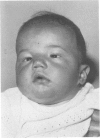Abstract
First cousins, related through their mothers, showed a pattern of craniofacial, brain, and limb anomalies consistent with the acrocallosal syndrome. Both patients had a defect of the corpus callosum, macrocephaly with a protruding forehead and occiput, hypertelorism, non-horizontal palpebral fissures, a small nose, notched ear lobes, and postaxial polydactyly of the hands. The boy, in addition, had hypospadias, cryptorchidism, inguinal hernias, duplication with syndactyly of the phalanges of the big toe, and a bipartite right clavicle. The girl had an arachnoidal cyst, a calvarian defect, and digitalisation of the thumbs. Motor and mental development was retarded in both patients. This observation provides further evidence of probable autosomal recessive inheritance of the acrocallosal syndrome and widens the spectrum of clinical findings and the variability of features in this rare malformation syndrome.
Full text
PDF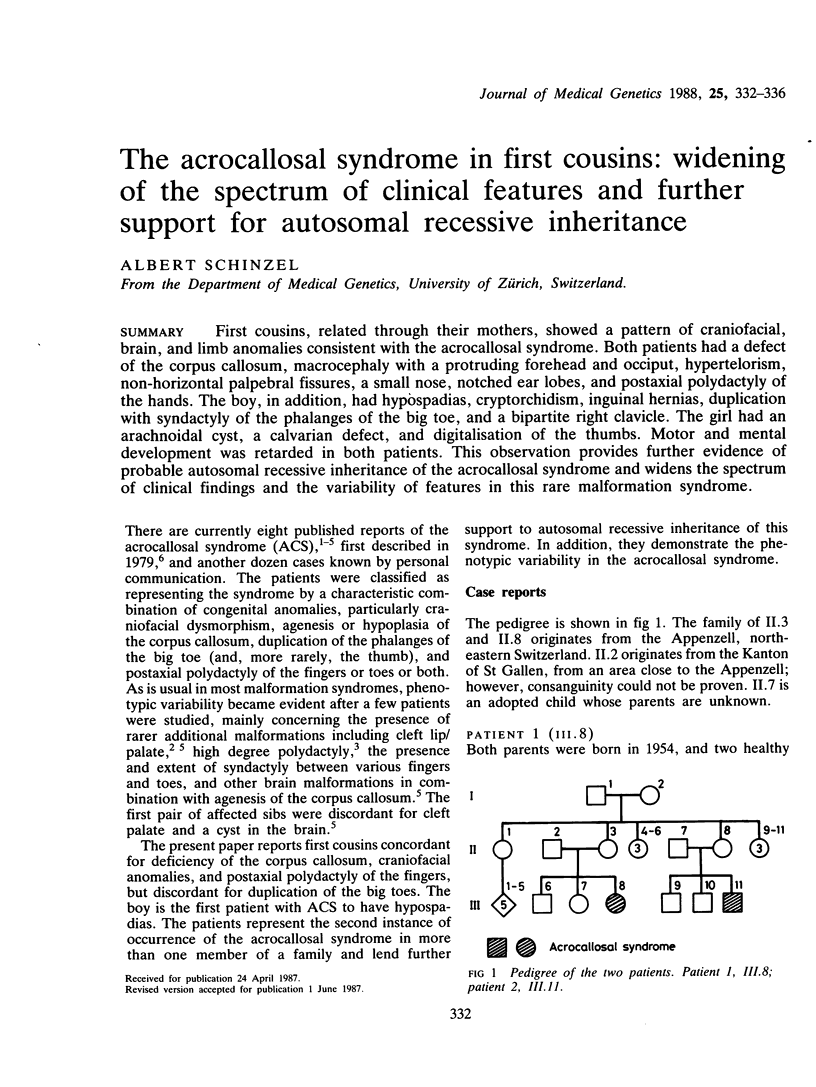
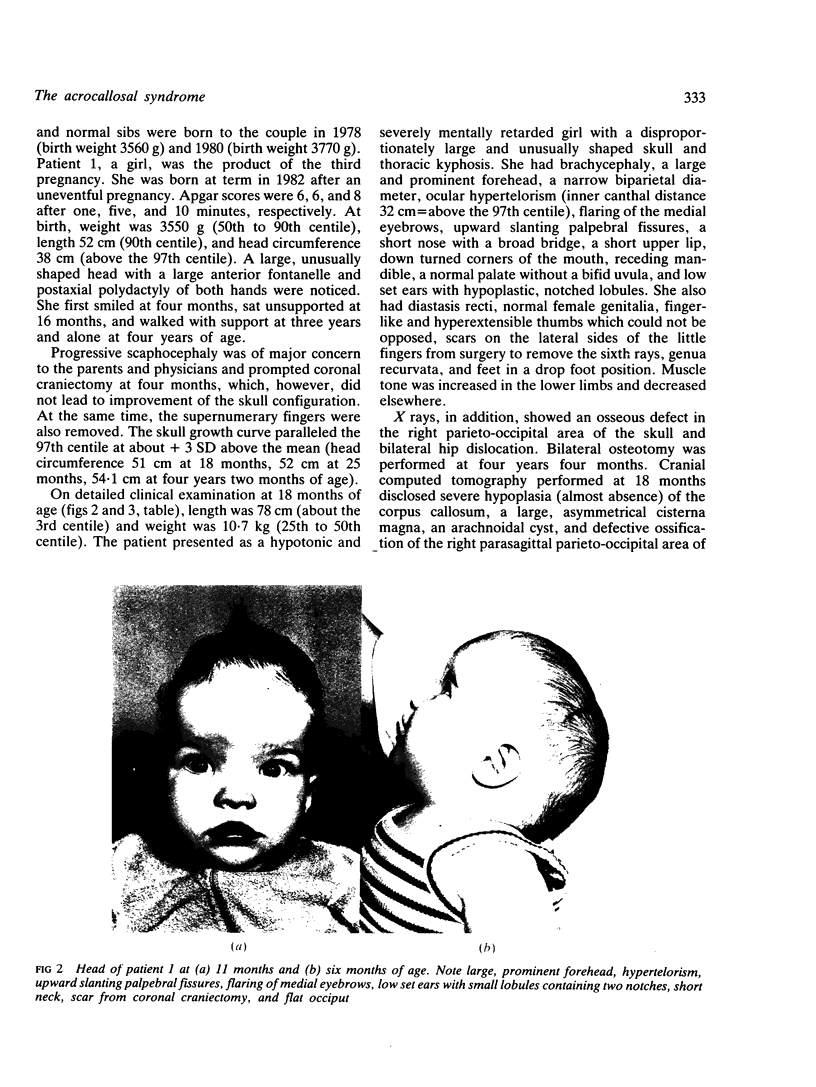
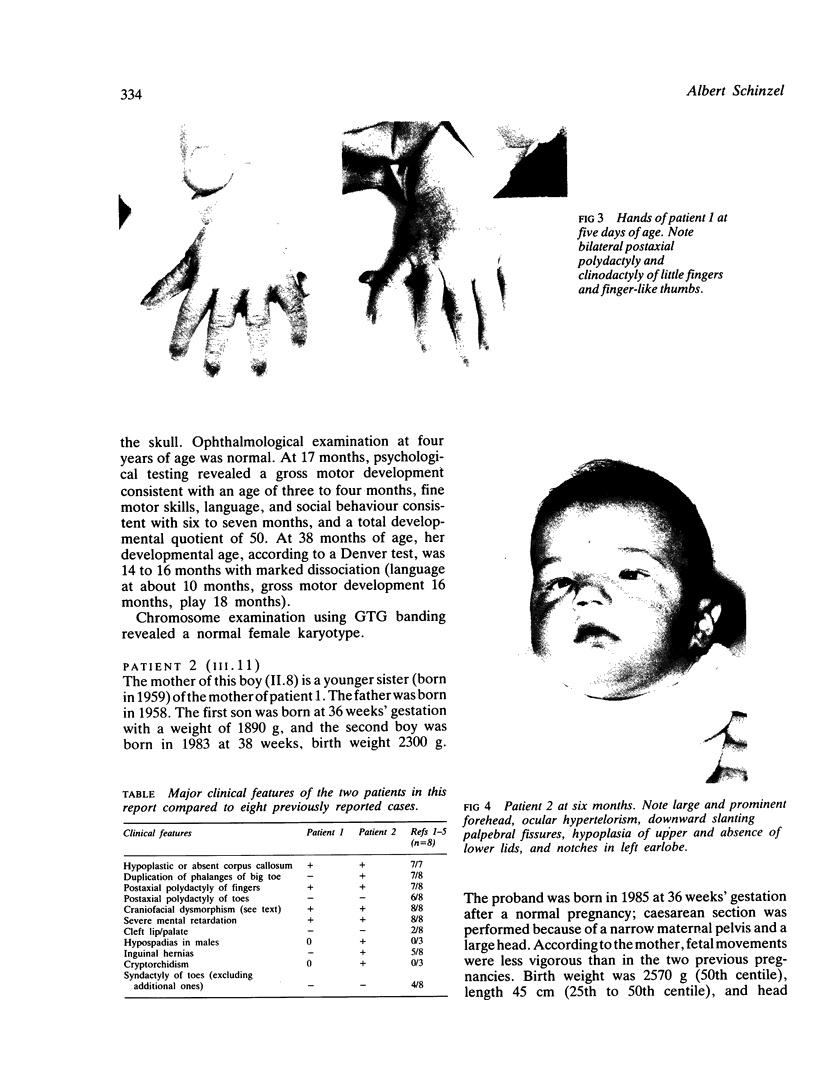
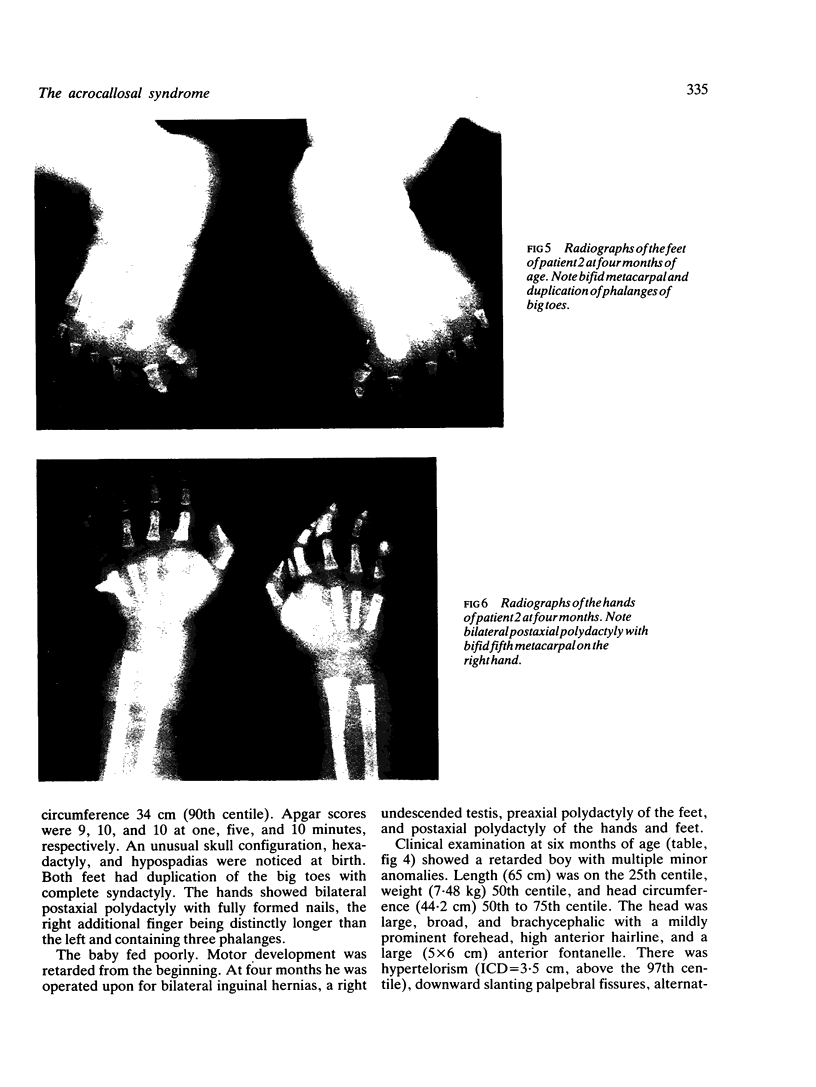
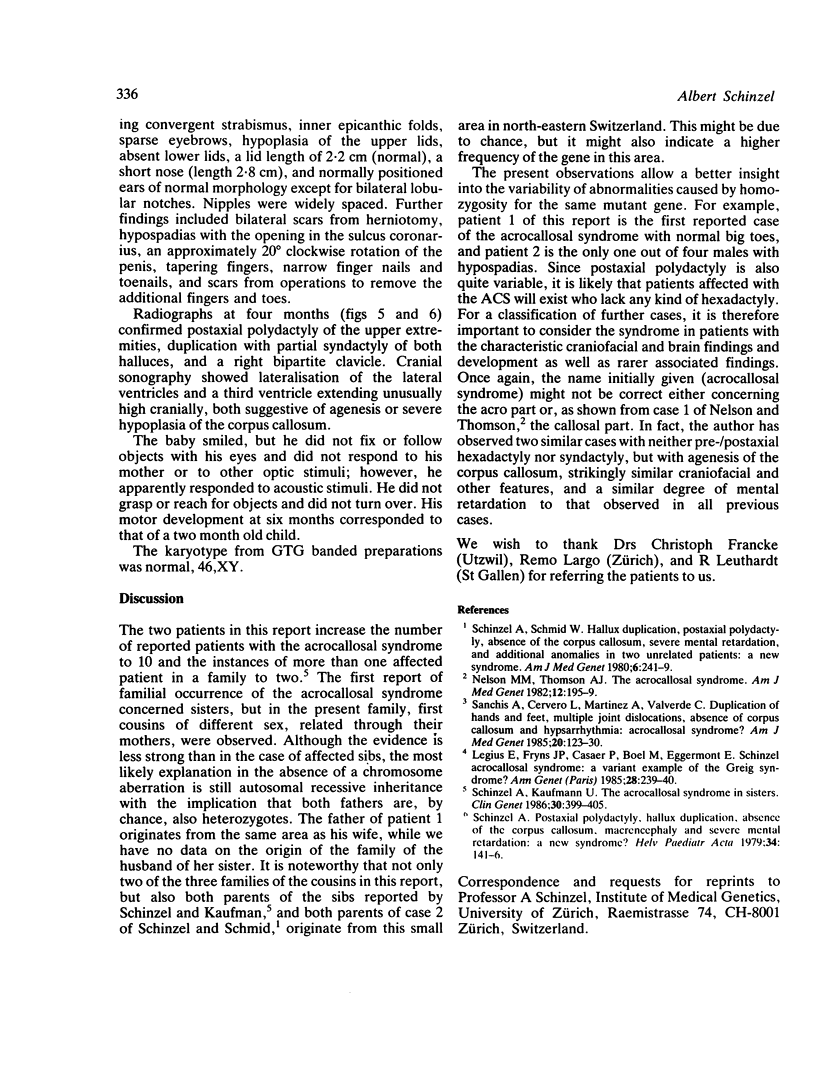
Images in this article
Selected References
These references are in PubMed. This may not be the complete list of references from this article.
- Legius E., Fryns J. P., Casaer P., Boel M., Eggermont E. Schinzel acrocallosal syndrome: a variant example of the Greig syndrome? Ann Genet. 1985;28(4):239–240. [PubMed] [Google Scholar]
- Nelson M. M., Thomson A. J. The acrocallosal syndrome. Am J Med Genet. 1982 Jun;12(2):195–199. doi: 10.1002/ajmg.1320120209. [DOI] [PubMed] [Google Scholar]
- Sanchis A., Cerveró L., Martínez A., Valverde C. Duplication of hands and feet, multiple joint dislocations, absence of corpus callosum and hypsarrhythmia: acrocallosal syndrome? Am J Med Genet. 1985 Jan;20(1):123–130. doi: 10.1002/ajmg.1320200115. [DOI] [PubMed] [Google Scholar]
- Schinzel A., Kaufmann U. The acrocallosal syndrome in sisters. Clin Genet. 1986 Nov;30(5):399–405. doi: 10.1111/j.1399-0004.1986.tb01897.x. [DOI] [PubMed] [Google Scholar]
- Schinzel A., Schmid W. Hallux duplication, postaxial polydactyly, absence of the corpus callosum, severe mental retardation, and additional anomalies in two unrelated patients: a new syndrome. Am J Med Genet. 1980;6(3):241–249. doi: 10.1002/ajmg.1320060308. [DOI] [PubMed] [Google Scholar]





